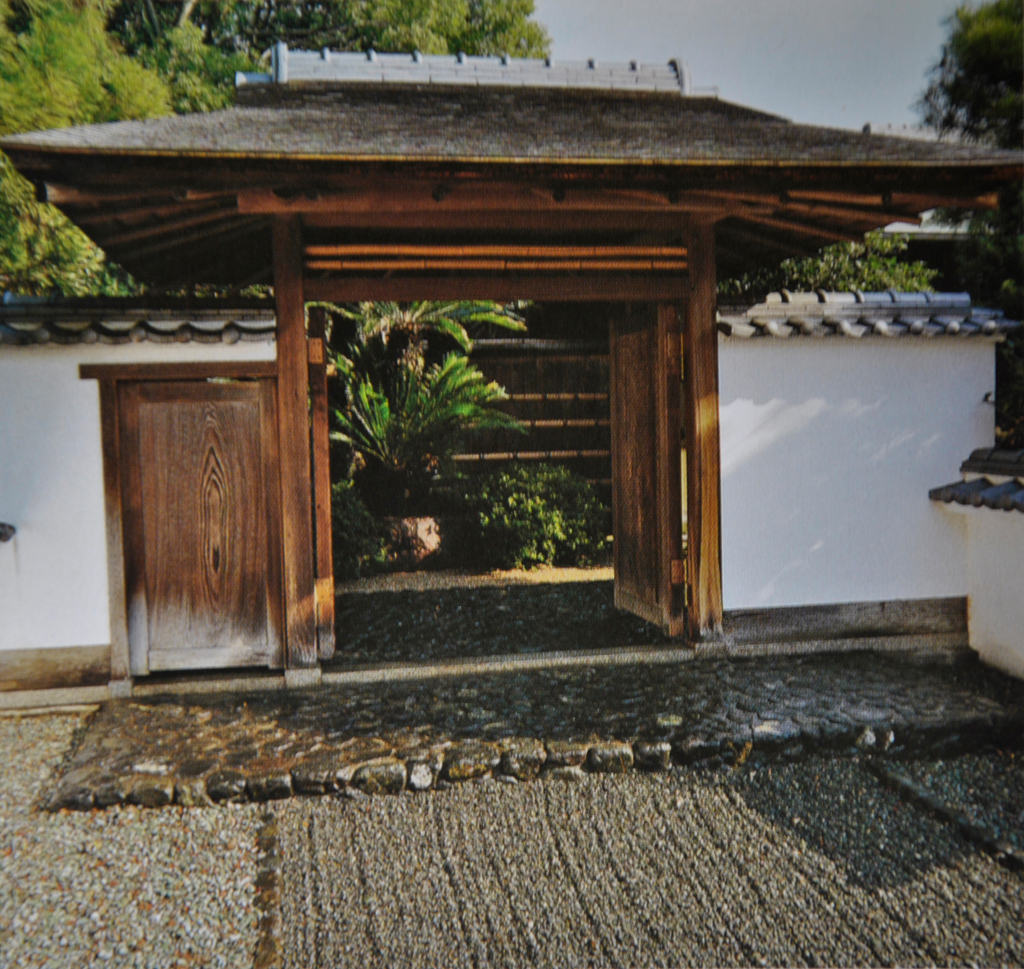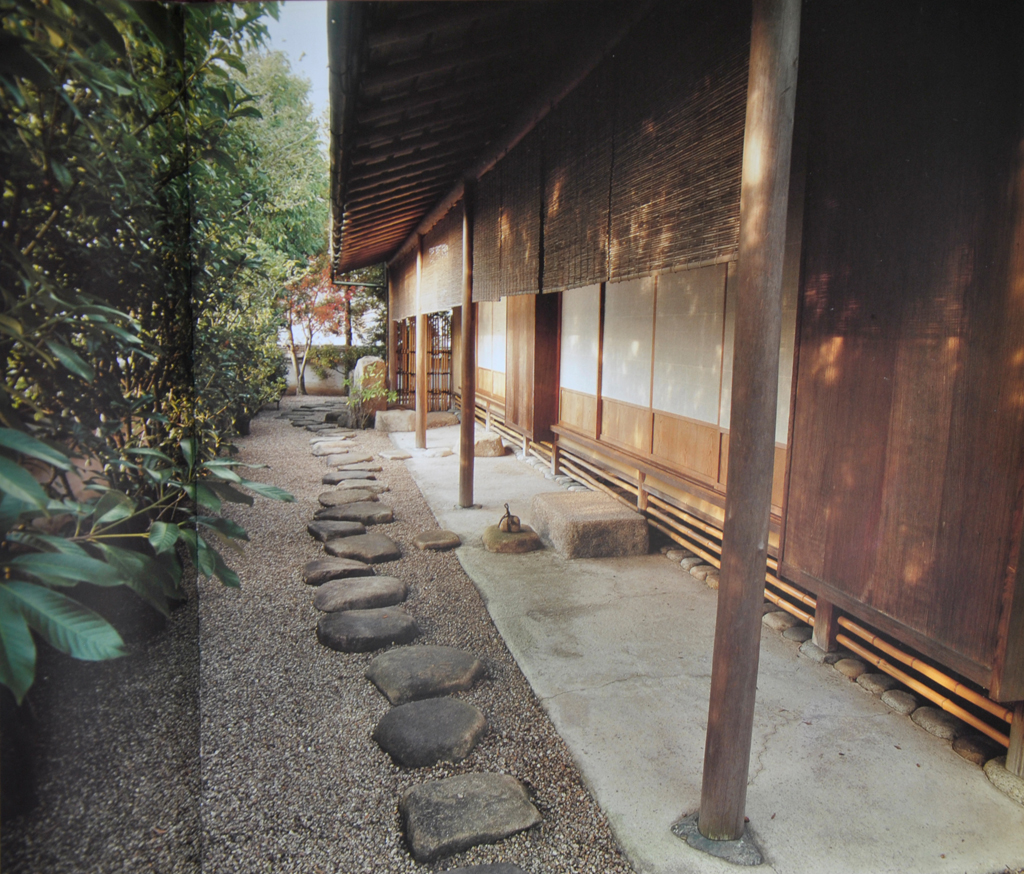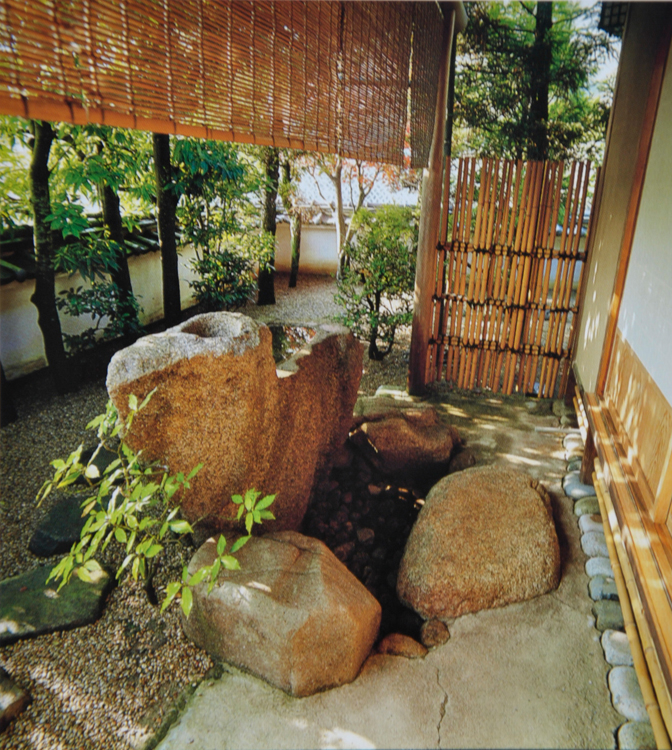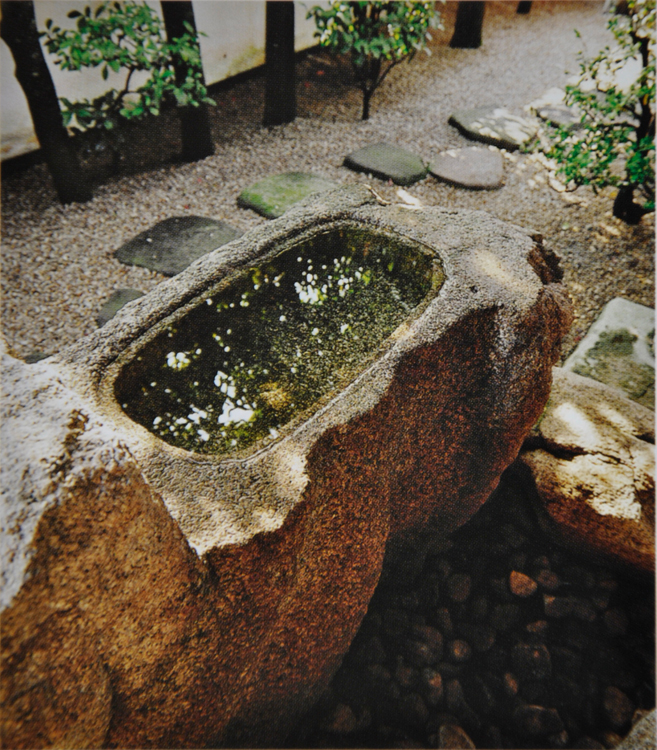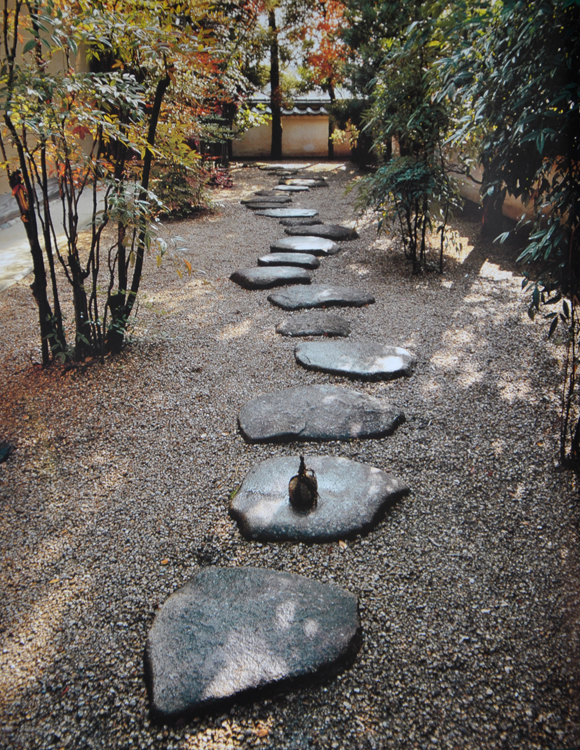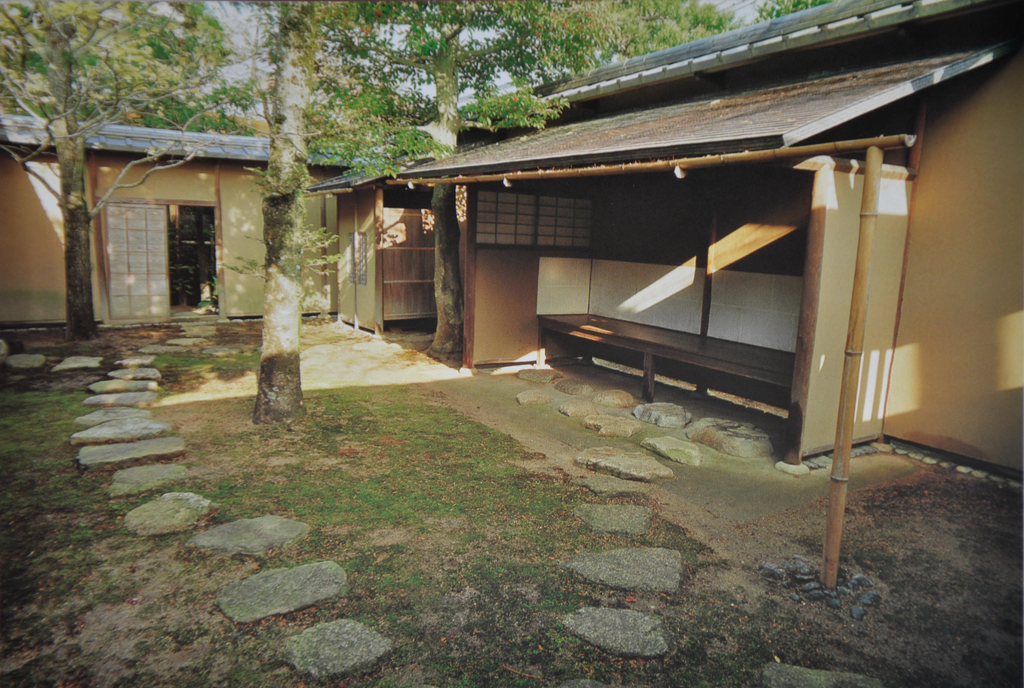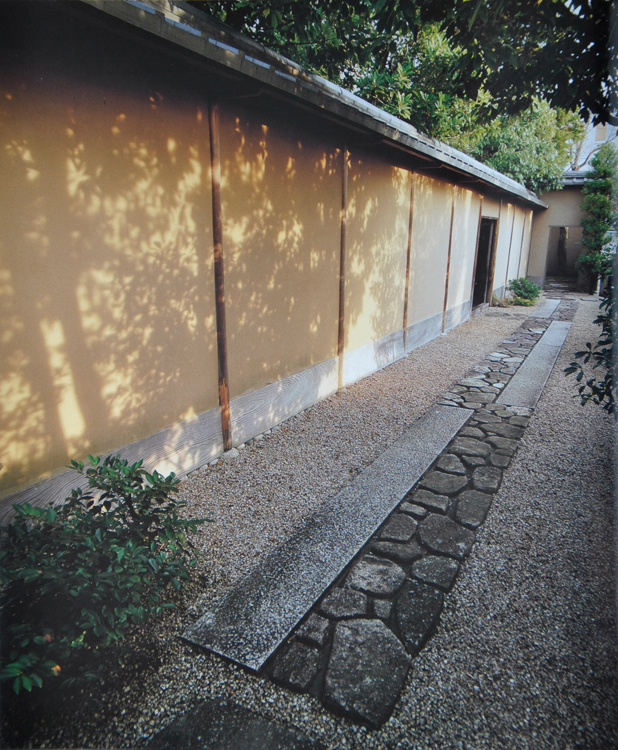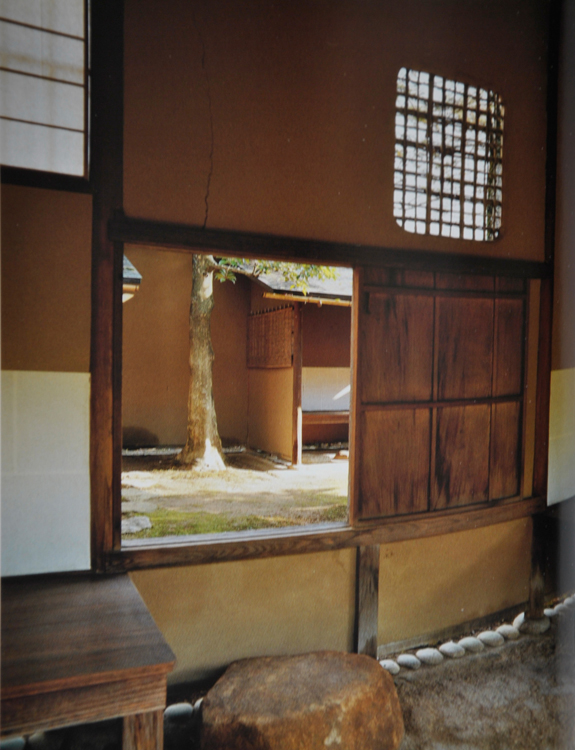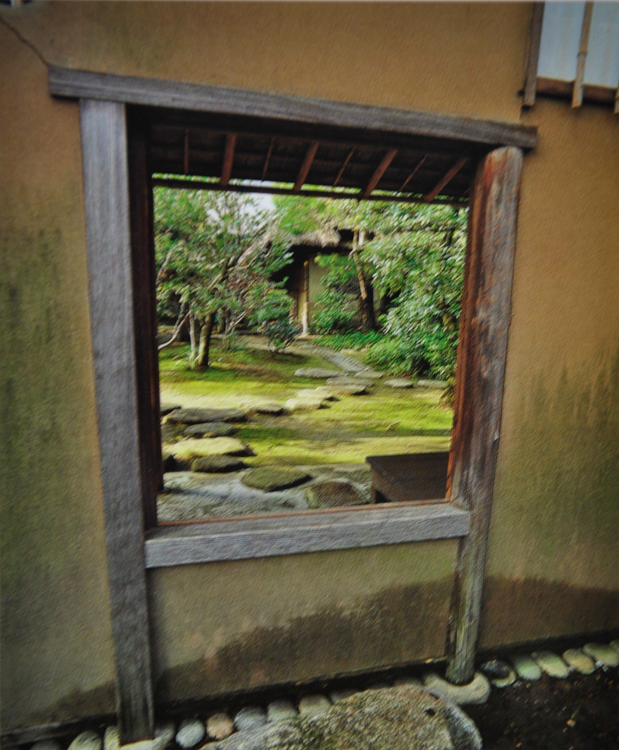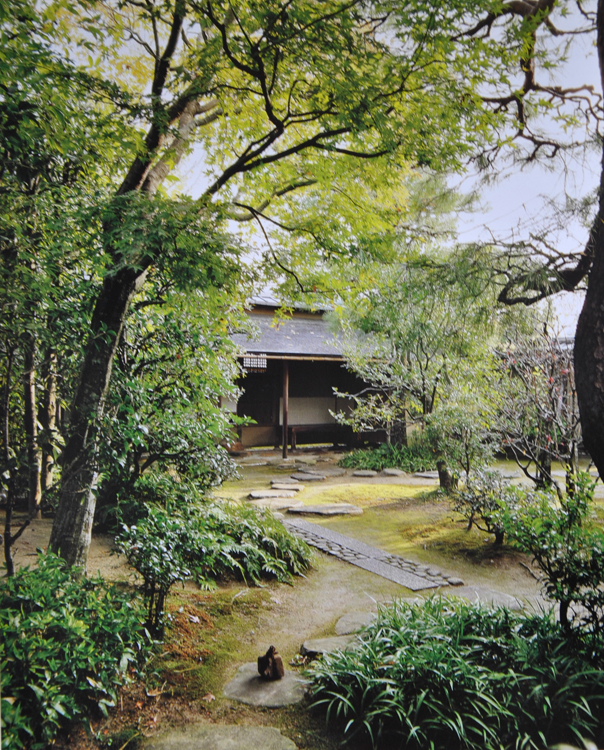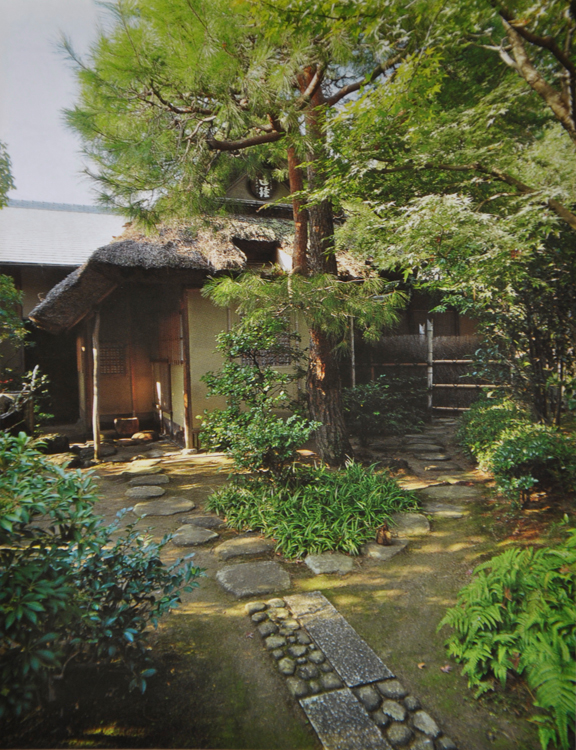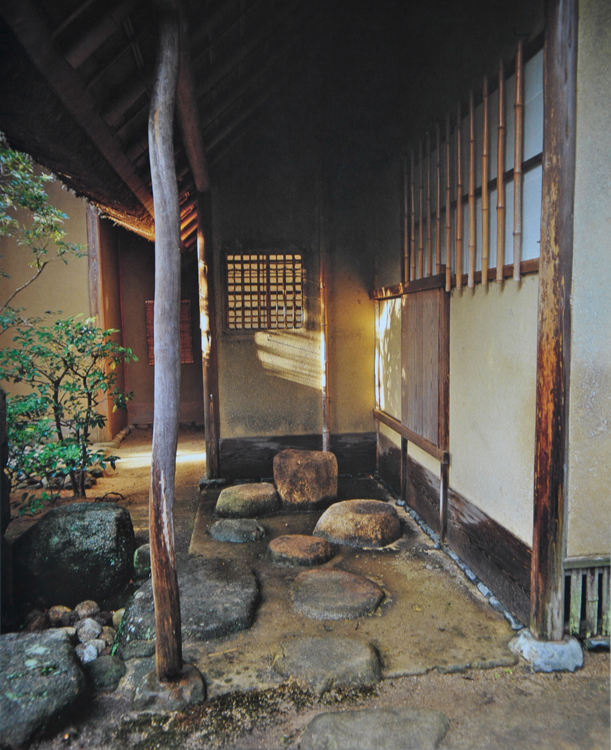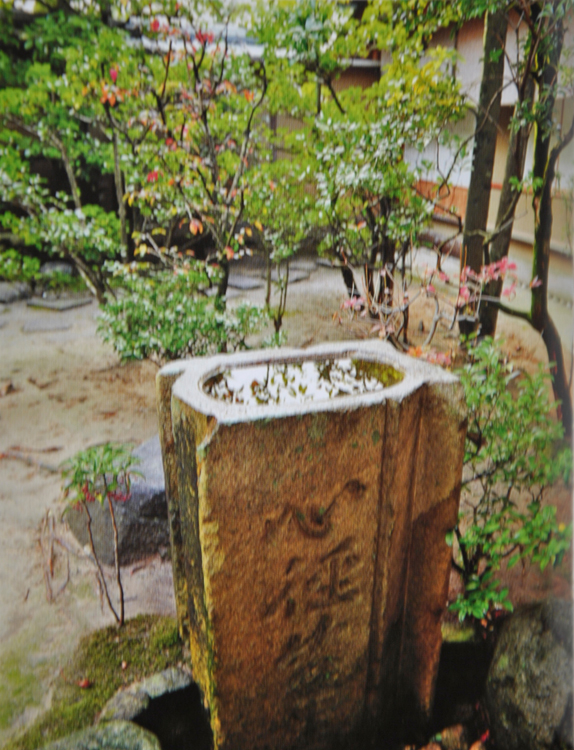
Wafudou of Ueda Soko Ryu
HiroshimaAmong the many schools of tea ceremony in Japan today, Ueda Soko Ryu is most closely related to the samurai traditions of yore. Its founder, Soko Ueda (1563-1650), was a young general who served diligently under the daimyo Nagahide Niwa and became known for his bravery. He later became an aide to the tea aficionado Shogun Hideyoshi Toyotomi. Ueda Soko is said to have learned tea ceremony directly from Rikyu and Oribe, two of the most well known tea masters in Japanese history. In a famous episode during the Summer Battle of Osaka (Osaka Natsu no Jin), Soko Ueda is said to have calmly fashioned two splendid chashaku tea spoons from a piece of bamboo lying nearby while awaiting the enemyТs attack. Such is the bold spirit of calmness that infuses the Ueda Soko Ryu tea style.
In 1619, soon after arriving in Hiroshima with his liege Nagaakira Asano, Ueda left the city for a secluded mountain village nearby and enjoyed a refined life there. He had already built a samurai house with tea house named Wafudou in Kisyu where had lived before, and went on to build another Wafudou tea house, garden and samurai residence near the Hiroshima castle area. Ueda became famous for the many gardens he designed during his lifetime, some of which still exist today.
The tradition of Ueda Soko Ryu is now being carried forward by its sixteenth-generation tea masters, and Wafudou still looks beautiful amid its garden in the western part of Hiroshima city. However, the road to this remarkable preservation of cultural treasure has been rocky and eventful. In the Meiji period, like many other samurai residences, UedaТs estate here was turned into a military drill field, and Wafudou was destroyed. This historic garden and documents of Ueda somehow escaped destruction at this time, as well as when the atom bomb was dropped on Hiroshima in 1945. Although many people connected to the Soko Ueda Ryu School perished, the tradition of his tea style survived and the present Wafudou was reconstructed in 1978, following illustrations of the original one made by Ueda.
The Ueda Soko Ryu garden is laid out in the style characteristic of the tea gardens and consists of an outer garden and inner garden. The inner garden leads to the tea hut called Ensho, which means Уthe sound of bells far awayФ, evoking the deep forest far from a city.
As a typical of tea gardens, this garden can also be thought of as setting the stage for the act of tea ceremony. First, the guest is led to the outer garden where he sits and waits on a bench surrounded by a high clay wall. With just five different tall trees, the simplicity of this garden helps the guest cleanse his or her mind. When the guest is ready, the act of getting up from the bench is a sign for the host to appear and lead the guest past the small gate in the bamboo fence, to the inner garden. The inner garden has an open feeling with many kinds of trees and bushes. Midway along the stepping stone path leading towards the tea hut one encounters a curved arrangement, causing a natural halt here. This spot has been deliberately designed to allow the guests to catch a glimpse through the trees of the name plaque hung under the roof of the tea hut. The guests then proceed to the samurai-style washbasin located near the tea hut, which is taller than the crouching type of washbasin; this was to avoid the discomfort of crouching for the samurai who were bearing swords. The carved words on the washbasin mean УAdmonish yourselfФ. This garden, the tea hut, and the few remaining teacups and spoon made by Ueda Soko that one can see here are reminders of his free spirit and samurai discipline.
Ueda Soko Ryu, the organization responsible for restoring Wafudou, has also started to restore the main samurai residence at his estate to its Edo-period state. This will make it possible to hold contemporary as well as traditional samurai style tea ceremonies in this complex, including some designed to show respect to the guest of extremely high status, such as the Shogun. These ceremonies are a vital part of the cultural history of Japan, and their preservation as well as that of the Ueda Soko Ryu garden is of importance.
anshin©2011All rights reserved. When using the materials of the site, reference is obligatory.
Proposals for co-operation, as well as comments and suggestions on the site please send to the address: anshin-sad@mail.rutel: +7 (965) 121-80-60, 10am-20pm
